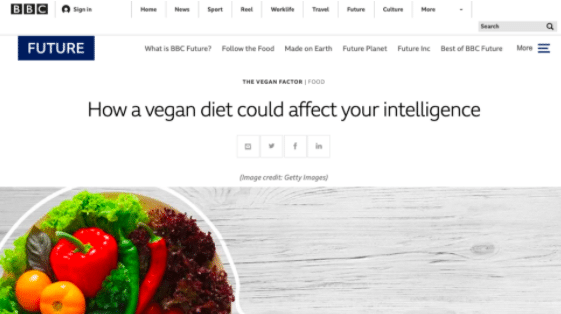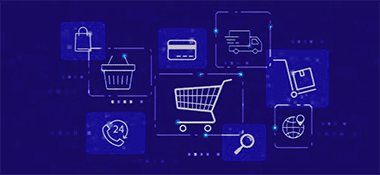Contextual targeting has been around for nearly two decades, gaining prominence in the early 2000s thanks to Google AdSense. But over the years, the allure and promise of Big Data and behavioral targeting have pushed it into the background.
Until now.
Because of the reasons we detail below, contextual targeting is taking center stage and serving as one solution for digital advertising in a post-cookie world. But first, a definition.
What is Contextual Targeting?
Contextual targeting matches an ad to a website page, based on the content of that page. The focus is on the content that is being consumed – not who is consuming it. To put it another way, it’s a high-tech version of a print ad, similar to buying an ad placement for sneakers in a running magazine.
Traditional contextual targeting is done by matching keywords on the page with keywords that you want to target. It can also work on a category level basis. For example, if you’re a bicycle brand, you might want to show your ad on any page that appears to focus on “bikes”, “bike review”, “bike maintenance”, “bike trips”, etc. Or you can take the category approach and show your ad next to content in the sports or outdoors categories. Or if you sell eyeglasses, like the example below, you might choose to have your ad run on a page about books.

The theory is that, with this approach, you’re reaching an audience likely to be interested in you because what they’re reading or watching is related to your offering. An added bonus is that since the ad is relevant to the content, it feels natural and less disruptive.
Why is Contextual Targeting Top of Mind Now?
A perfect storm of factors has made now a pivotal moment for contextual targeting campaigns:
1. It addresses brand safety and suitability concerns.
The rapid growth of programmatic and the gaffes that resulted from its growing pains have made brands ultra-sensitive to where their ads show. In an era of “fake news”, hate speech, and Covid-19, it often feels like there are too many pitfalls to avoid.
Contextual targeting solves for this, ensuring that ads are only showing next to content that is relevant to their offering. And today, technology can go beyond keywords to understand the nuances and sentiment of a page to better determine its relevancy and safety. This offers peace of mind, while also keeping more inventory on the table.
Let’s say you’re selling a vegan cookbook. From a basic keyword matching perspective, the article below checks the right boxes – it appears to be about the vegan diet. But the general sentiment of the piece is actually negative toward veganism. AI can recognize this today and remove it from the list of placement options for your cookbook ad.

2. It doesn’t rely on third-party cookies.
GDPR, CCPA, IDFA. These are small acronyms related to protecting consumer privacy that spell big changes for the digital ad industry. In addition to Apple killing its IDFA and blocking third-party cookies in Safari, Google is also phasing out third-party cookies. This means that in the very near future, advertisers that use third-party data to fuel campaigns will need to find other options.
Contextual targeting is one such option. Because it doesn’t target specific users, it doesn’t rely on third-party cookies in any way. It’s also tried and true, and a viable option right now. Other solutions for post-cookie advertising are still being solidified and won’t be ready for some time.
3. It still delivers a great customer experience.
Achieving 1:1 personalization has been the holy grail for advertisers for many years. Some worry that the move away from this forced by the loss of third-party data will lead to irrelevant, ineffective ads.
But providers in the space report that contextual targeting drives better performance than behavioral targeting. One provider stated that global research found that 69% of consumers were more likely to engage with contextually relevant ads.
In addition, forward-thinking advertisers are beginning to use their first party data to help them better understand the content interests of their audiences and refine their contextual targeting.
4. It’s way smarter than it used to be.
Identifying relevant content used to be a simple keyword matching exercise. Like the rest of ad tech, contextual targeting has grown tremendously thanks to advances in AI.
Today, natural language processing (NLP) allows for a deeper understanding of the context and sentiment of each page. We’ve moved from “this page mentions travel to Italy” to “this page is about a poor experience traveling to Italy”. Machine learning is helping advertisers move away from keywords and whitelists, leaning on AI instead to find the most relevant content.
In addition to text analysis, machine vision can also scan images and video and understand their meaning. Audio can be analyzed and understood, as well. This can add to the overall understanding of a page and give advertisers other inventory options, like in-video ads and OTT/CTV.
Contextual Targeting…or Contextual Intelligence?
While marketers have been focused on other strategies, contextual targeting has quietly transformed into a powerful, technologically advanced tool. Its AI-powered ability to identify relevant, safe placements has earned it a new name: “contextual intelligence”. As marketers plan for a new digital advertising landscape, this intelligence will be key to connecting with consumers in new ways.

















